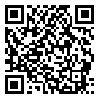شنبه 29 شهریور 1404
چکیده: (600 مشاهده)
Purpose: The present study evaluated the combined effects of motor imagery practice (MIP) and transcranial direct current stimulation (tDCS) on static and dynamic balance in athletes with chronic ankle instability (CAI).
Methods: A randomized, double-blind design was used. Fourteen athletes (mean age, 24.5 ± 2.62 years; 7 females) were randomly assigned to either a motor imagery-anodal tDCS group (MI-AtDCS) or a motor imagery-sham tDCS group (MI-StDCS). Participants completed a guided imagery procedure with an online tDCS over the dorsolateral prefrontal cortex (DLPFC). The static and dynamic balance were assessed pre-and post-intervention using the Biodex Balance System, which measured medial-lateral, anterior-posterior, and overall stability control.
Results: The MI-AtDCS group demonstrated significant improvements in static and dynamic balance metrics (p < 0.05), while the significant changes were not seen in the MI-tDCS group.
Conclusion: These results suggest that combining MIP with tDCS enhances motor control and balance, potentially through increased neural excitability induced by tDCS. This study provides preliminary evidence that MIP integrated with tDCS may augment rehabilitation protocols, improving postural control and mitigating injury risk in athletes with CAI.
Methods: A randomized, double-blind design was used. Fourteen athletes (mean age, 24.5 ± 2.62 years; 7 females) were randomly assigned to either a motor imagery-anodal tDCS group (MI-AtDCS) or a motor imagery-sham tDCS group (MI-StDCS). Participants completed a guided imagery procedure with an online tDCS over the dorsolateral prefrontal cortex (DLPFC). The static and dynamic balance were assessed pre-and post-intervention using the Biodex Balance System, which measured medial-lateral, anterior-posterior, and overall stability control.
Results: The MI-AtDCS group demonstrated significant improvements in static and dynamic balance metrics (p < 0.05), while the significant changes were not seen in the MI-tDCS group.
Conclusion: These results suggest that combining MIP with tDCS enhances motor control and balance, potentially through increased neural excitability induced by tDCS. This study provides preliminary evidence that MIP integrated with tDCS may augment rehabilitation protocols, improving postural control and mitigating injury risk in athletes with CAI.
| بازنشر اطلاعات | |
 |
این مقاله تحت شرایط Creative Commons Attribution-NonCommercial 4.0 International License قابل بازنشر است. |



